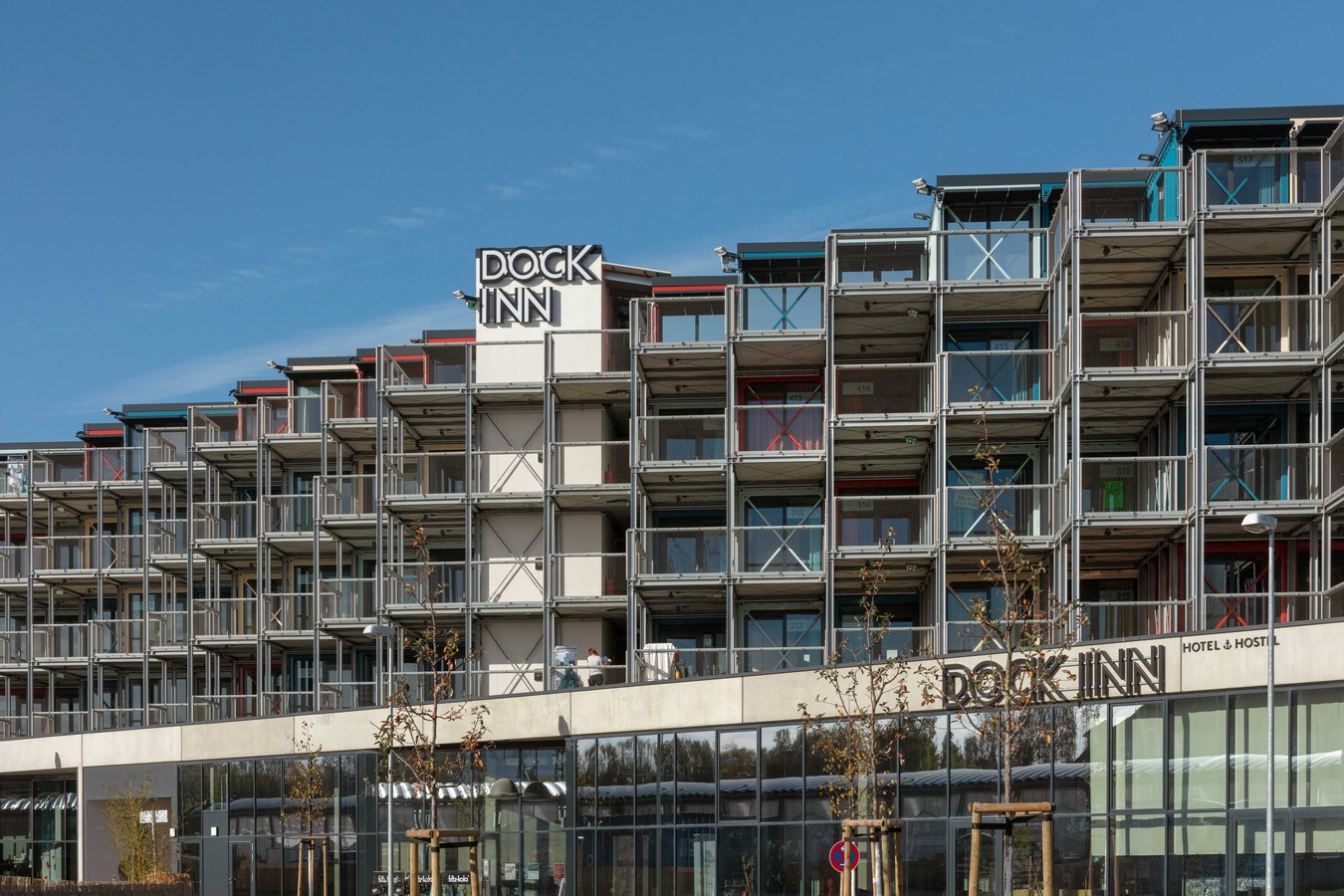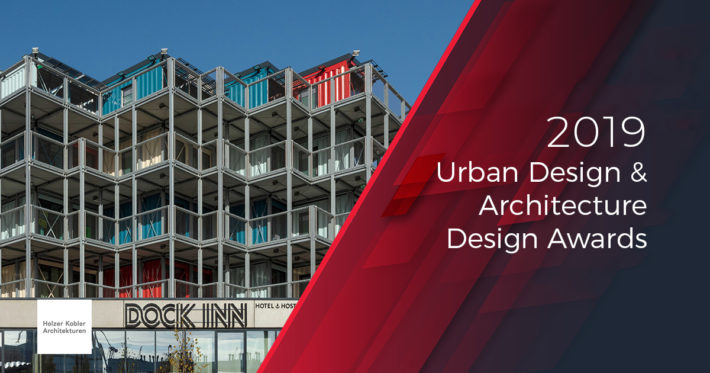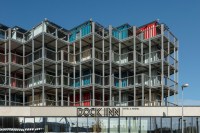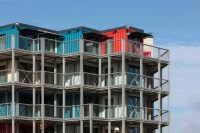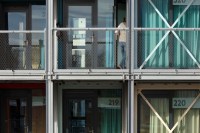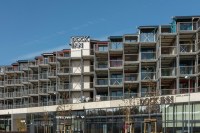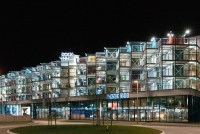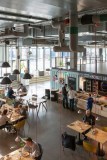In their previous life, the 25-m2 overseas containers transported consumer goods across the ocean; today, the 63 containers have been transformed into a hostel where keen travellers can dream of the open seas.
Winner – Urban Design & Architecture Design Awards 2019
Firm | Holzer Kobler Architekturen
Category | Hospitality
Team | Barbara Holzer, Holzer Kobler Architekturen, KINZO Architekten GmbH
Country | Switzerland
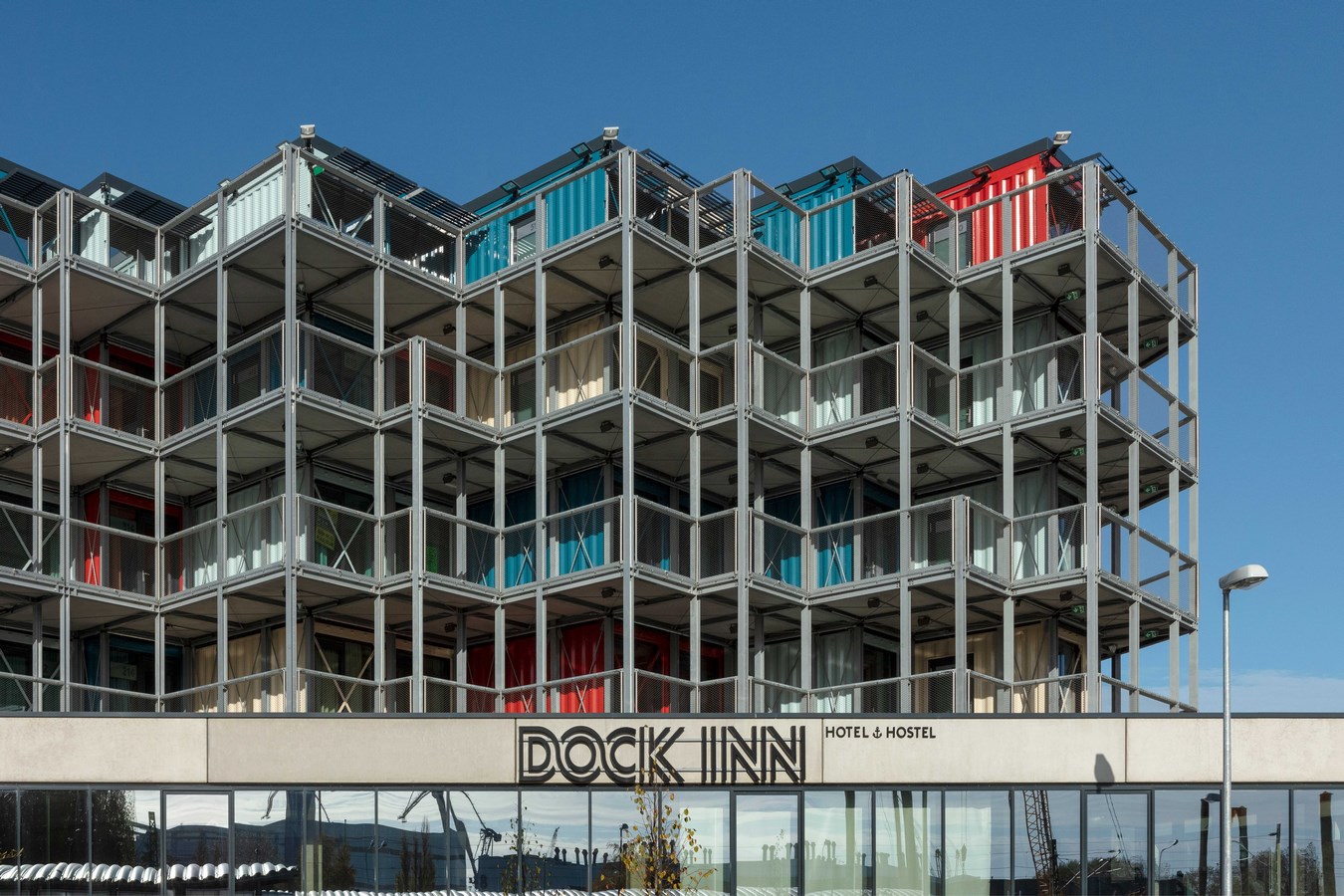
With its construction from recycled intermodal containers and its unique location by the harbour, the design hostel on Zum Zollamt in Warnemünde has a real connection to shipyards rich in tradition and the open seas beyond. The building complex is divided into two parts A four-storey structure made from recycled, soundproofed overseas containers sits on a two-storey base structure of steel, concrete and glass. The base structure comprises an open, inviting entrance hall with a restaurant, bar, guest kitchen, work stations on an integrated gallery and a boulder hall. The glass front facing onto the street allows lots of natural light into the space.
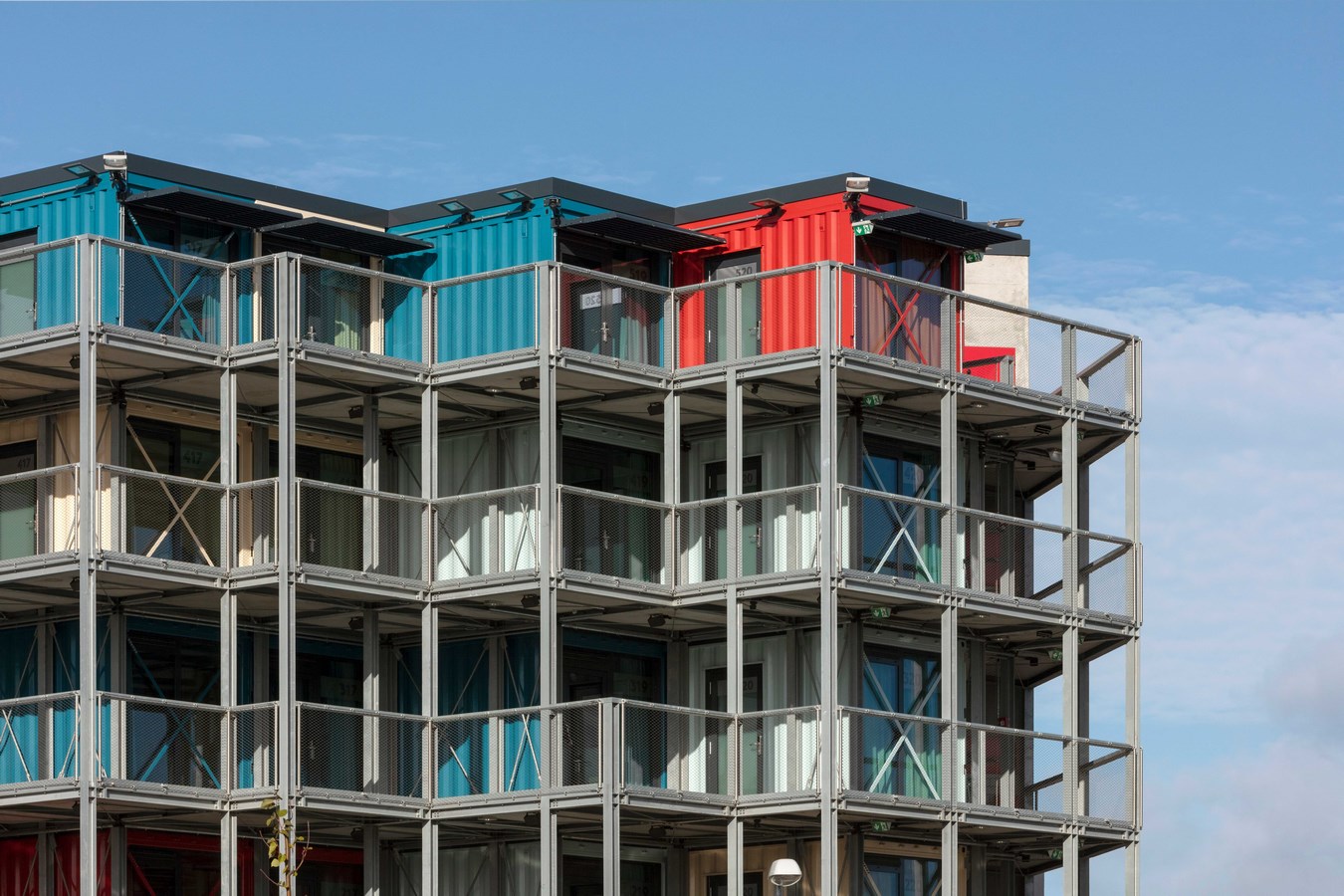
The coloured, painted container modules making up the four upper floors are offset and embedded in a steel and concrete structure. The visible container structure with the containers neatly lined up in a row and the bright colours reflecting the maritime environment of the sea, beaches, shipyard cranes and horizon consciously create an eyecatching, industrial-style piece of architecture in the harbour area. The steel bunks represent a particular attitude to life in our globalised, nomadic age.
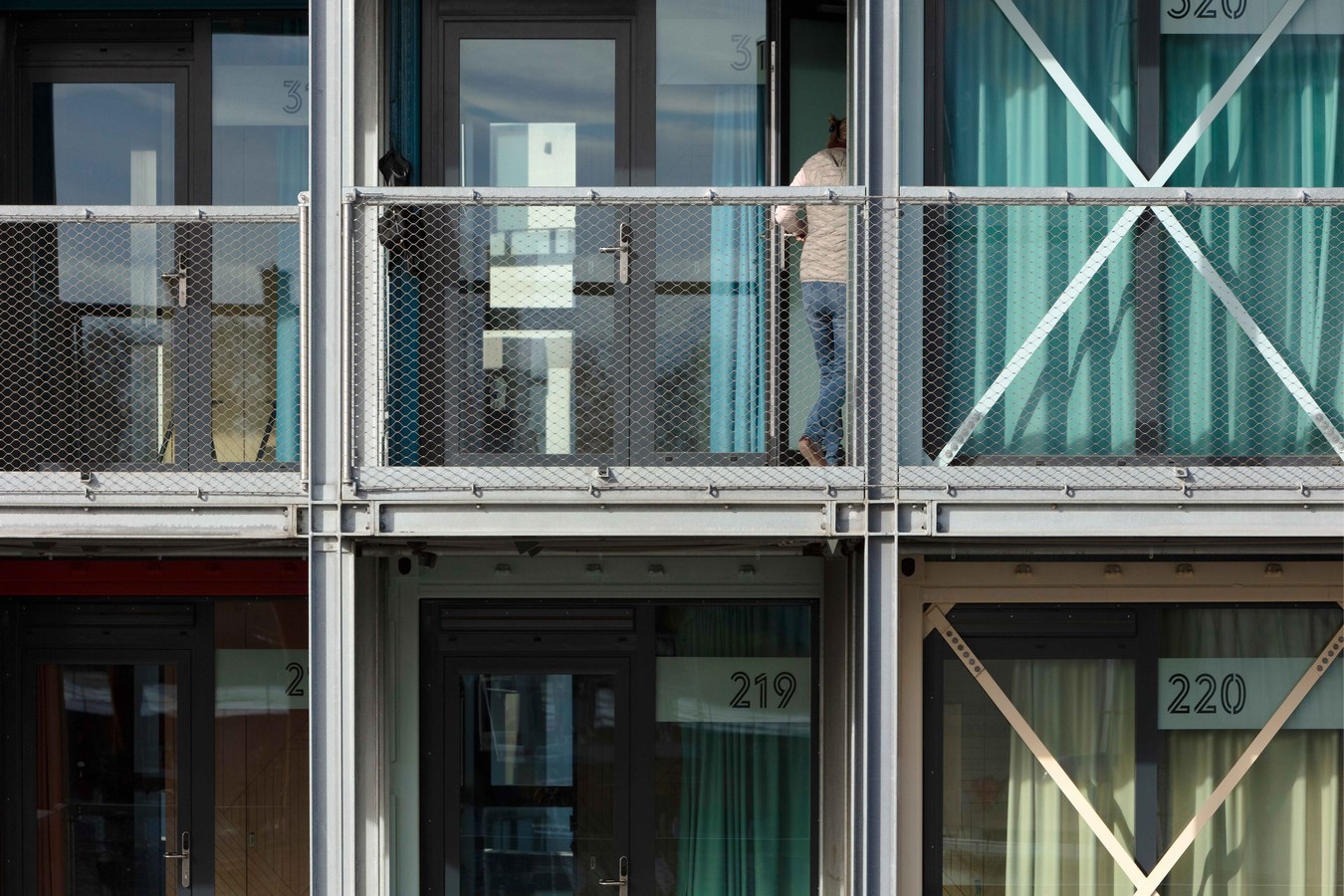
The design hostel offers double rooms and dormitories, as well as suites on the top floor. Some of the container units on the top floor have even been transformed into a spa. Facing the nearby River Warnow, all living areas offer a view of the harbour. The balconies providing access to the rooms feature extended platforms where you can relax and get to know some of your fellow guests. The unusual, open entrance areas on all floors makes the building look «lived in» from the outside and marks it out as a place of interaction to anyone passing by — whether on foot or by boat.
